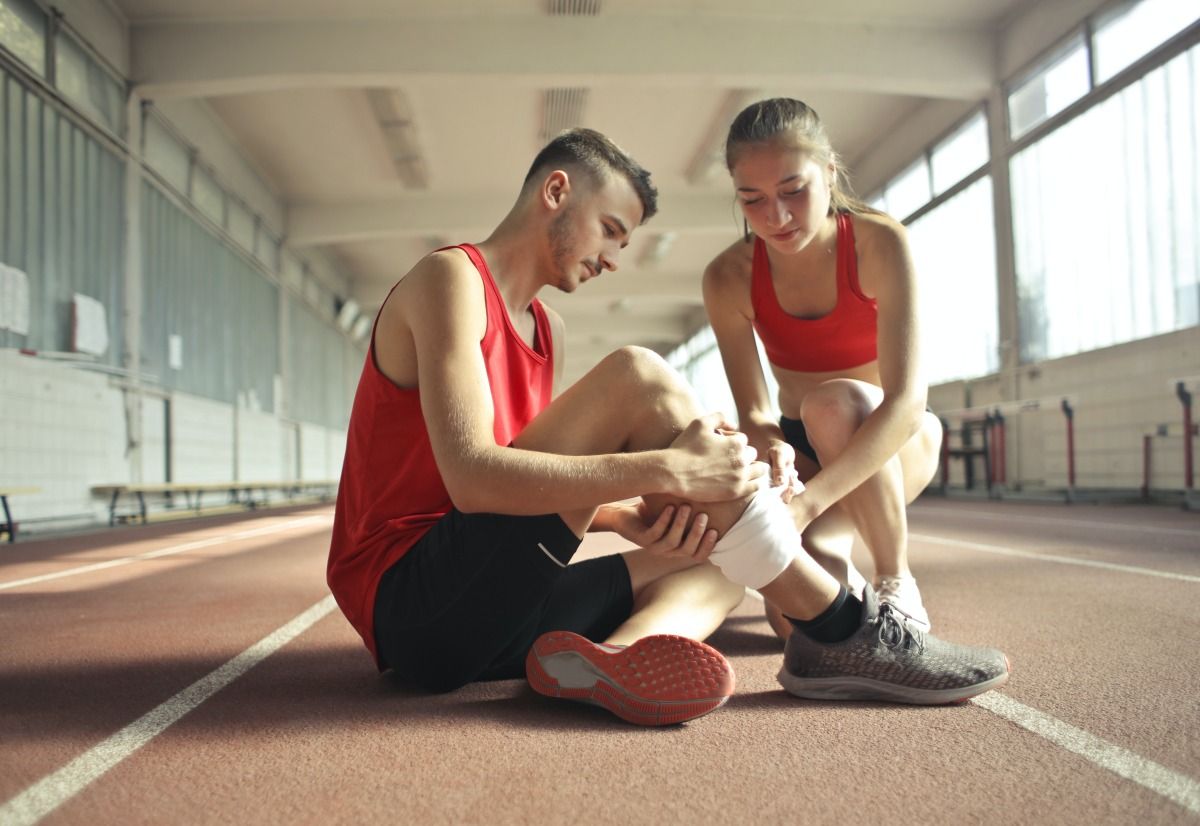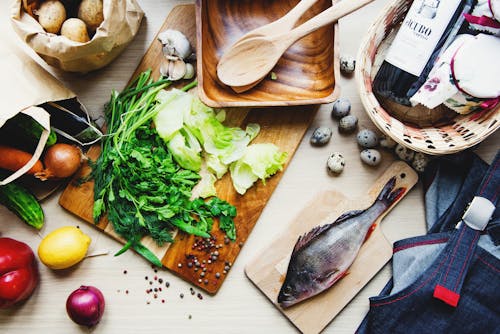
Reading your CircleDNA test results can be full of ups and downs. In my case, the upside of being genetically predisposed to a more youthful appearance and having no elevated risk of diseases was tempered by a higher risk of injury.
Based on my DNA, I not only have a higher risk of injury, but I also have a genetically low pain tolerance. Developing chronic pain from injuries is a concern for me.
As a dancer and someone who can’t sit still or expect to function without movement, I don’t want to simply expect an injury to take place due to my elevated risk. I want to prevent injuries by strengthening my connective tissue.
I decided to look into how to prevent injuries because I want to be able to dance, exercise and do other activities I love while minimizing my risk of getting injured.
If you have a higher risk of injury based on genetics, what can you do to prevent injuries?
Assessing Your Injury Risk Profile
Your injury risk profile involves genes that deal with collagen production, protection against muscle damage, the control of oxidative stress and inflammation. Although they have a high degree of influence over your injury risk, it is not inevitable that you will suffer a sports injury. Even those in the highest category of influence can have their expression changed by diet, lifestyle and the environment.

Solution 1: Collagen Supplementation
Collagen is the main connective tissue protein in the body, helping build your tendons, ligaments and bones while keeping your skin firm. That’s a lot of responsibilities for one type of protein! Not just any collagen will do, so you’re unlikely to get many benefits from soup or broth. Instead, collagen hydrolysate or specific collagen peptides (SCPs) have shown significant benefits in clinical trials.
A study of athletes with chronic ankle instability (CAI), a common consequence of ankle sprain, compared supplementation with five grams of SCPs to a placebo over six months. After six months, ankle function significantly improved, and there was a reduction in ankle joint injuries too. Twenty-four out of 25 people reported fewer ankle sprains, and 23/25 reported reduced injuries. These figures were only 9/25 and 15/25 in the placebo group, respectively. In another trial, collagen peptides improved mechanical stress resistance and tissue firmness. People with a higher degree of joint laxity (like me!) had more benefits.
Solution 2: Vitamin C
Don’t forget to add vitamin C, which is essential for collagen production. Lab studies show that tendon cells only produce collagen at one-third of the normal rate without vitamin C. However, supplementation can boost pro-collagen generation by six times. Vitamin C acts as an antioxidant as well, helping to neutralize the superoxide free radical. The genes for certain superoxide dismutase enzymes – the main player in superoxide elimination – are tested in your injury risk profile.
You shouldn’t rely on vitamin C alone; you still need to combine vitamin C with collagen supplementation or an increased protein intake. Only increasing vitamin C levels leads to an accumulation of pro-collagen, as you don’t have the raw materials to complete collagen production.
Solution 3: Supplement with Curcumin
Heavy workouts trigger a degree of exercise-induced muscle damage (EIMD), which causes the all-too-familiar sore, stiff feeling that can last up to three days. This usually resolves on its own, but those of us more vulnerable to injury may want to give it a helping hand to avoid an accumulation of damage over time. EIMD leads to inflammation, which is damaging to tissues in itself. Therefore, controlling inflammation may bring you relief now and protect your future self.
Research shows that curcumin could help to clamp down on inflammation associated with EIMD. Curcumin also reduces muscle damage, shown by lower blood levels of creatine kinase, and improves muscle performance. The necessary dosage range is between 150-1500mg a day, before and up to 72 hours after your workout. However, even just one 150mg dose soon after exercise has shown significant benefits.
Solution 4: Hyperbaric Oxygen Therapy
Hyperbaric oxygen therapy (HBOT) has been around for years to stop the bends after diving in deep water. More recently, different therapeutic uses from diabetic wound healing to brain injuries have been studied. I haven’t tried HBOT yet, but it is accessible in my area in a recovery centre popular for its hydrotherapy and sauna services.
HBOT has earned its place in my local sports recovery centre because it may speed tissue repair after exercise. A study testing HBOT on healthy, younger men found that HBOT significantly relieved inflammation and reduced markers of muscle damage. Some of this effect is down to HBOT improving blood flow. Oxygen is also essential for the vast majority of our energy production, which supports everything our cells do, including tissue repair. Once the damage is repaired, the inflammatory response can end.

Solution 5: Reduce Glycation
Glycation is the destructive process of unabsorbed blood sugar becoming tangled with tissue proteins and fats. This damages their structural integrity and turns the affected area into a source of more inflammation and oxidative stress.
Tissue glycation is thought to be one cause of biological aging, which is accelerated in diabetes as more blood sugar goes unabsorbed. We can see from aged skin that glycation makes tissues more brittle, less elastic and less functional. So what can we do to at least slow it down?
As I explain in my book, Infla-Menses, the most important thing we must do to reduce glycation is look at our diets. This is more than just lowering sugar intake, which helps to prevent glycation inside our bodies. Cooking foods with water, an acid source (such as lemon or vinegar) or both reduces advanced glycation end-product (AGE) formation in food. Plant-based foods, seafood and poultry generate less AGEs than red meat. Fried or blackened foods are the worst offenders when it comes to AGE levels, so it’s best to eat them rarely if at all.
Beyond diet, regular exercise can reduce AGE accumulation by 21% in the patellar tendon. Some flavonoids, the “non-essential” nutrients in fruit and vegetables with a range of health benefits, may slow AGE build-up too. Epicatechin is particularly potent, as it may even break up AGEs that have already been formed!
Solution 6: Nip Injuries in the Bud with PRP
If you already have a minor injury, it’s best to find ways to actively support healing now, rather than later. Platelet-rich plasma (PRP) may be one of them, which has enjoyed increased popularity in recent years thanks to its regenerative effects. The growth factors in PRP relieve inflammation, prevent connective tissue loss, and attract stem cells to the affected area while stimulating their division and differentiation. PRP may even reduce cellular senescence and increase the numbers of biologically younger, functional cells. Prolonged use of corticosteroids, on the other hand, leads to tissue destruction.
However, it is important to follow the other steps here if you decide on PRP. One clinical trial found that PRP from older men with severe osteoarthritis actually worsened inflammation and impaired regeneration. This was because their blood had more damaging inflammatory factors, so improving your overall health beforehand may be your key to success.
Remember that your genes don’t decide your fate. Even if your DNA test results report a higher risk of injury, there are many things you can do to stay safe while doing the activities you love. Supplementing with collagen, vitamin C and curcumin, while reducing glycation and using more high-tech therapies such as HBOT or PRP if necessary can all play a role in protecting yourself from injuries.






This Post Has 3 Comments
Comments are closed.